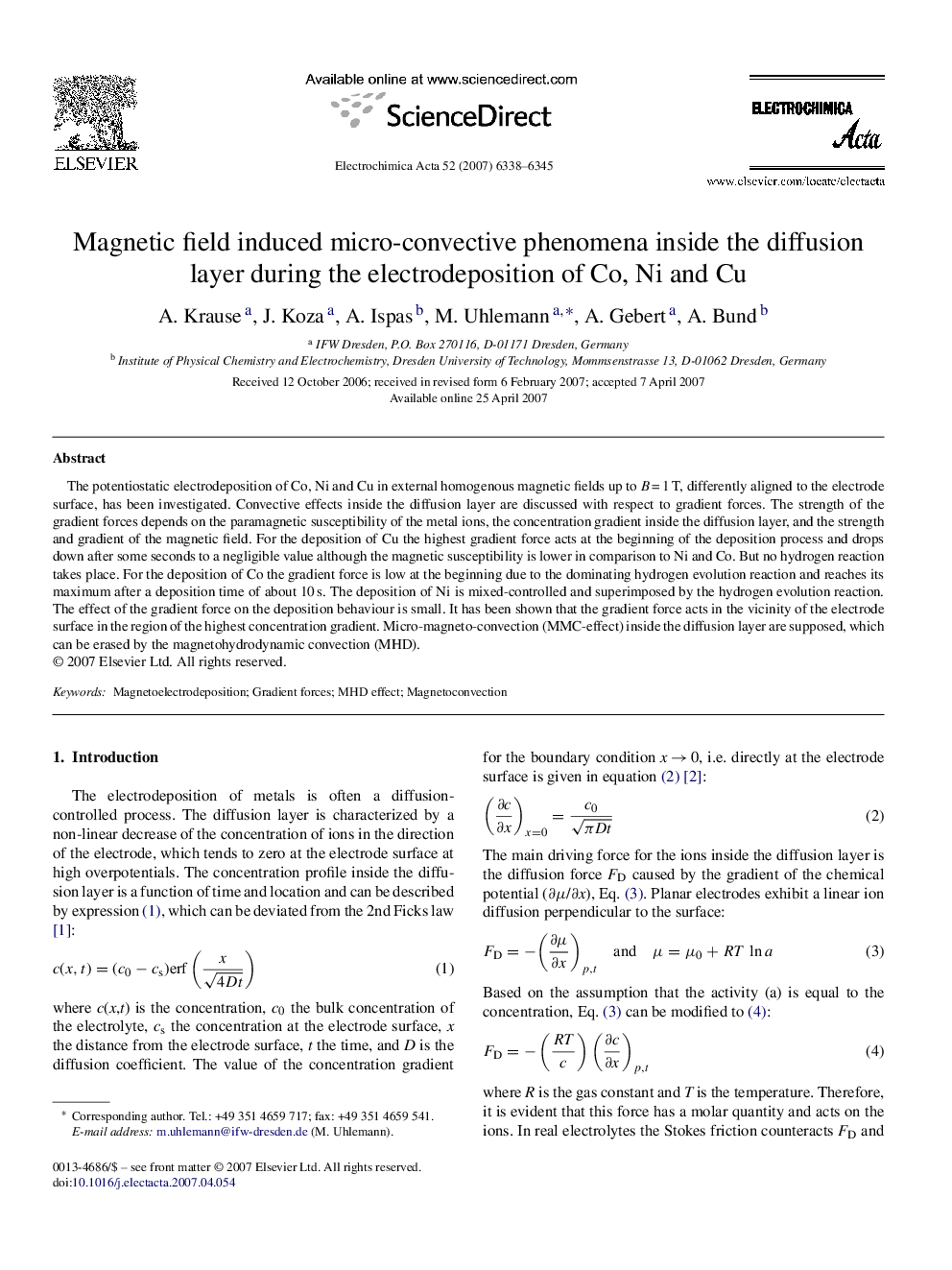| Article ID | Journal | Published Year | Pages | File Type |
|---|---|---|---|---|
| 194223 | Electrochimica Acta | 2007 | 8 Pages |
The potentiostatic electrodeposition of Co, Ni and Cu in external homogenous magnetic fields up to B = 1 T, differently aligned to the electrode surface, has been investigated. Convective effects inside the diffusion layer are discussed with respect to gradient forces. The strength of the gradient forces depends on the paramagnetic susceptibility of the metal ions, the concentration gradient inside the diffusion layer, and the strength and gradient of the magnetic field. For the deposition of Cu the highest gradient force acts at the beginning of the deposition process and drops down after some seconds to a negligible value although the magnetic susceptibility is lower in comparison to Ni and Co. But no hydrogen reaction takes place. For the deposition of Co the gradient force is low at the beginning due to the dominating hydrogen evolution reaction and reaches its maximum after a deposition time of about 10 s. The deposition of Ni is mixed-controlled and superimposed by the hydrogen evolution reaction. The effect of the gradient force on the deposition behaviour is small. It has been shown that the gradient force acts in the vicinity of the electrode surface in the region of the highest concentration gradient. Micro-magneto-convection (MMC-effect) inside the diffusion layer are supposed, which can be erased by the magnetohydrodynamic convection (MHD).
